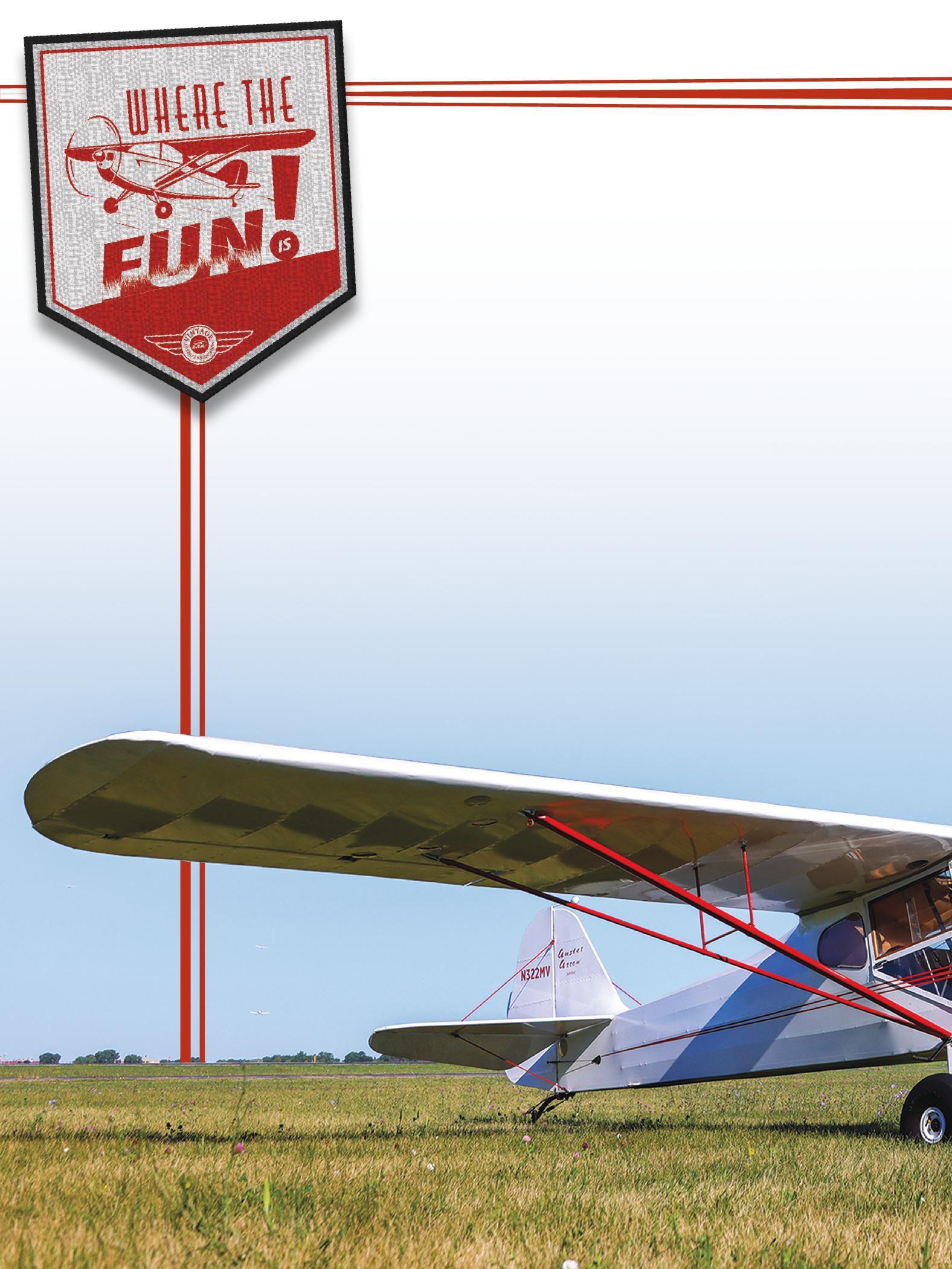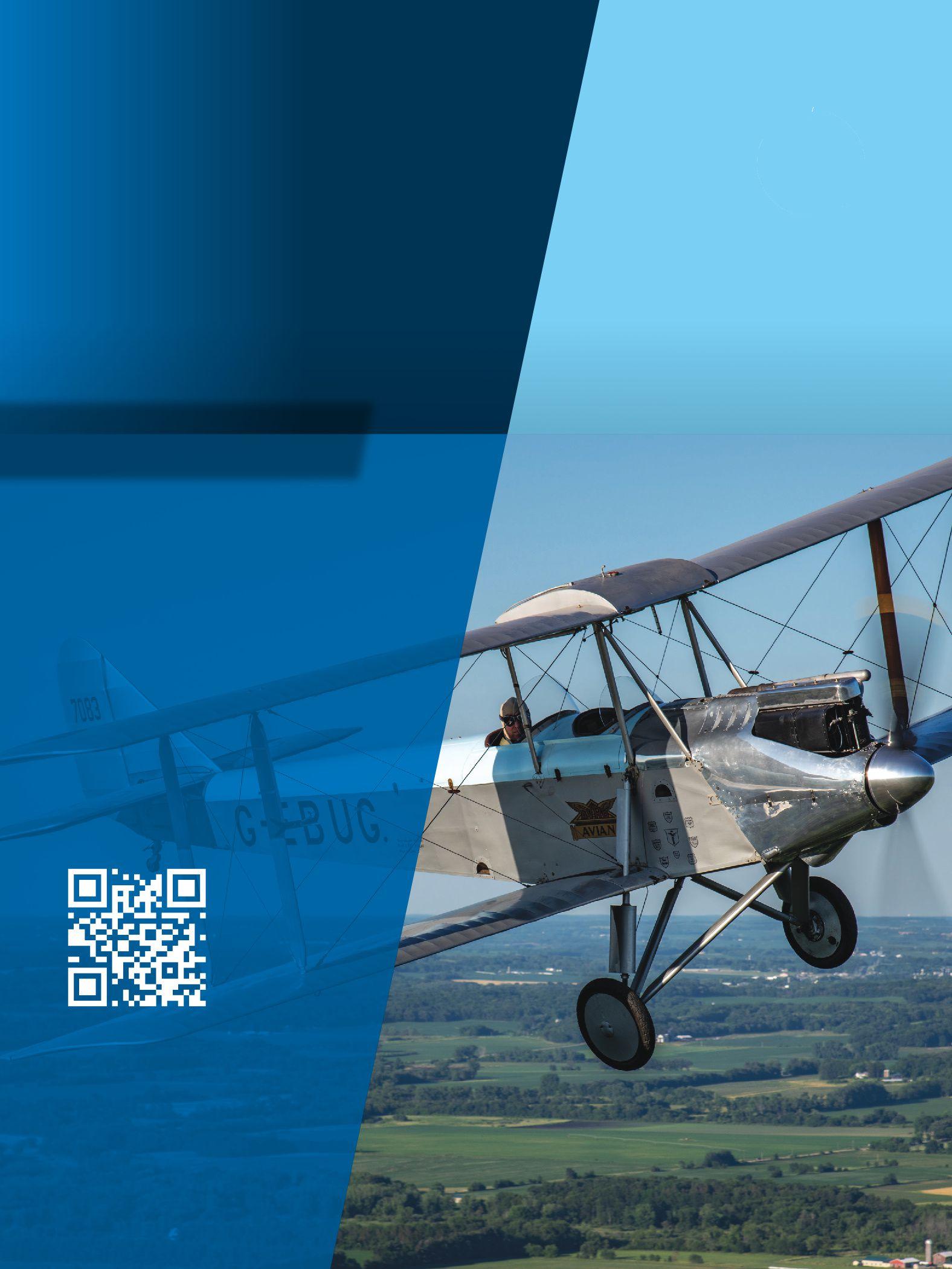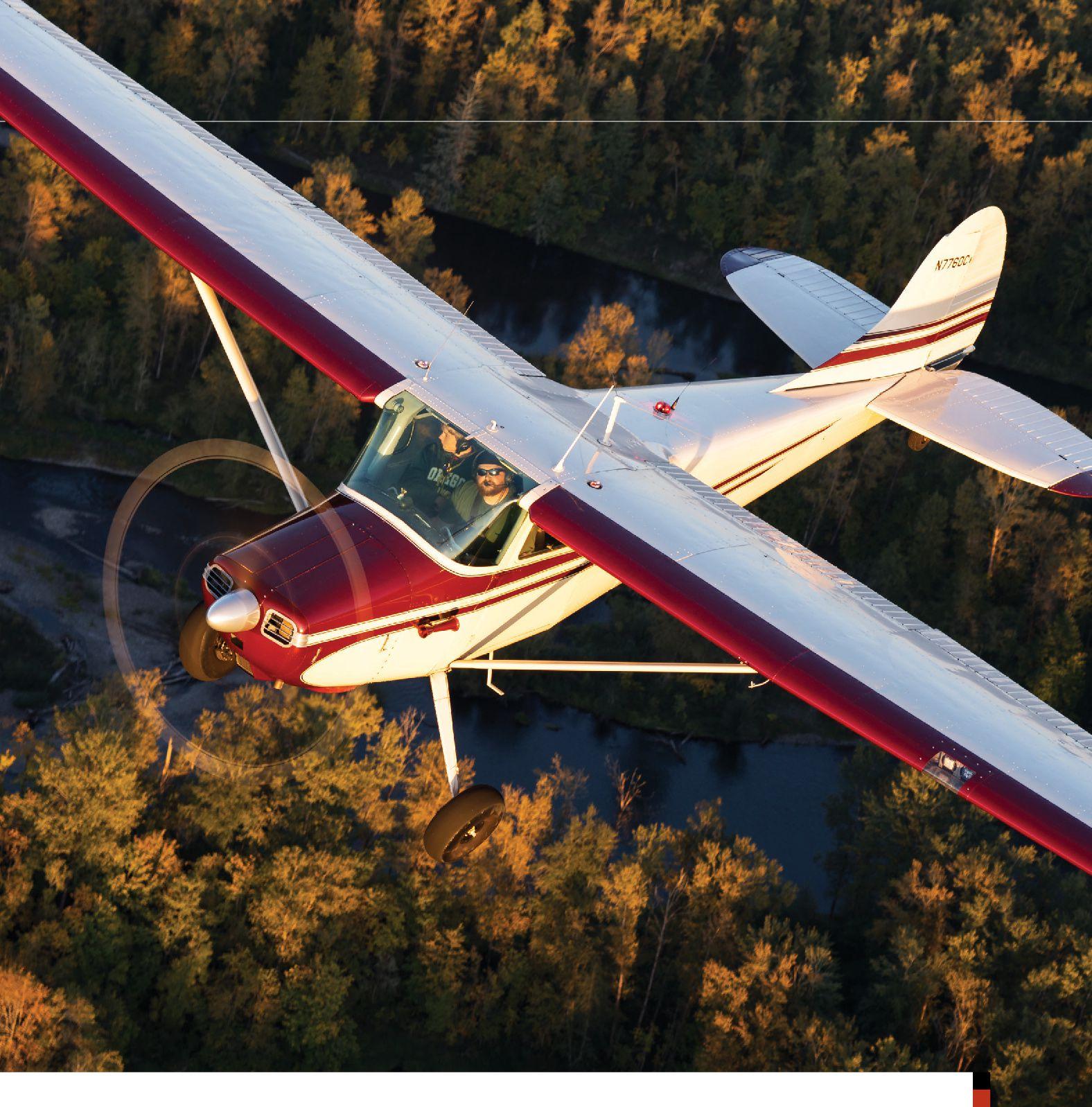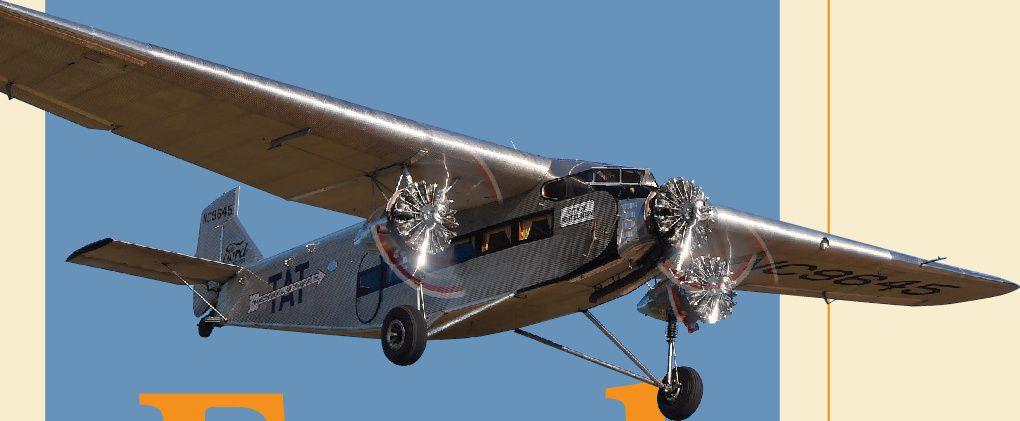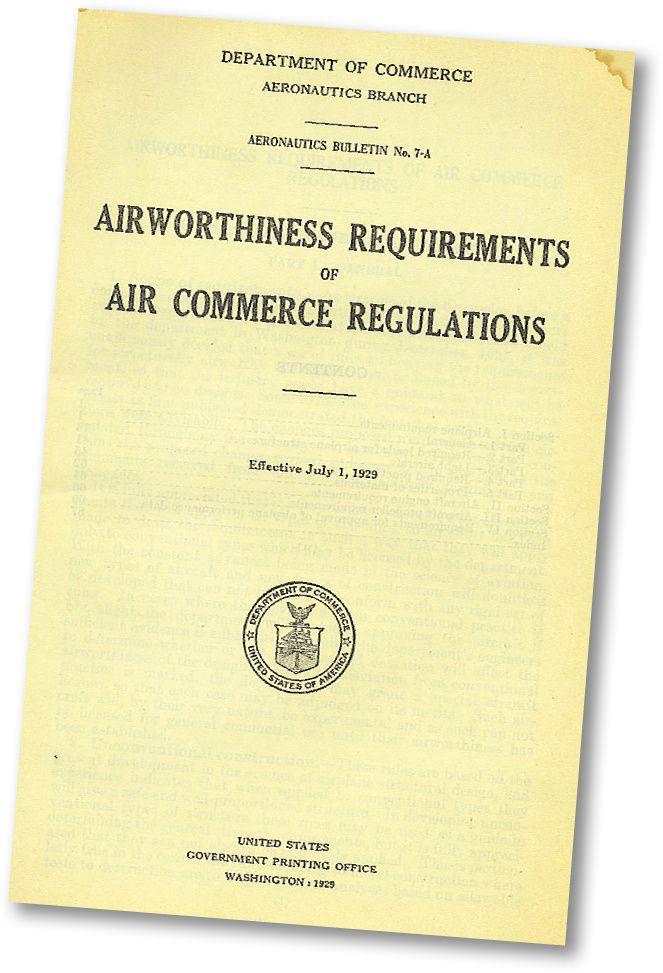
5 minute read
Repairs, alterations, maintenance, preventive maintenance
BY ROBERT G. LOCK
WE BEGIN THIS ISSUE with a discussion about maintenance, repairs, and alterations for the antique airplane. Let’s proceed from the owner’s standpoint and talk briefly about preventive maintenance. Federal Aviation Regulations (FAR) Part 43, Appendix A(c) describes preventive maintenance as that maintenance that can be accomplished by the owner, provided it does not involve complex assembly operations. We will cover just a few; if you’re interested, consult FAR 43.
First, the owner can make minor fabric repairs consisting of bonding a fabric patch to small holes. It does not allow patching large holes or doing any kind of rib lacing. Also included is making sheet metal repairs to secondary structures, such as cowling, fairings, and the like. It does not authorize repairs to the primary structure. The owner can repaint the aircraft, but not balanced control surfaces. The owner can replace tires and tubes, replenish fluid in shock struts and brake cylinders, and replace upholstery. The owner can replace shock absorbers, pack wheel bearings, and lubricate components, as long as there is no disassembly required. The owner can replace seat belts, light bulbs in landing and navigation lights, and replace and service the battery. As far as the engine is concerned, the owner can change oil; inspect oil and fuel screens; replace, clean, and gap spark plugs; and replace hoses in fuel and oil systems (excluding hydraulic systems). Please note that this is only a partial listing.
If the airplane is operated “for hire,” then the work needs to be supervised by an A&P mechanic who needs to make an appropriate entry in the logbooks.
An A&P mechanic can perform and return to service minor repairs, minor alterations, and maintenance, including 100-hour inspections. An A&P mechanic cannot approve major repairs, major alterations and annual inspections. An A&P holding an inspection authorization (A&P-IA) can approve the above; however, the only major alterations that can be approved by the A&P-IA are those listed in FAA Advisory Circular 43-13-2A and some supplemental type certificate (STC) installations. But this major alteration issue is good for another column devoted to this one subject at a future date.
A simple definition of a major repair is a repair to the aircraft structure that returns the airplane to conformity with its approved type certificate (ATC), or in rare cases its Group 2 approval.
Similarly, a major alteration is something done to the structure that moves the airplane outside of its ATC or Group 2 approval.
Let me list just a few Major Repairs, as specified by FAR Part 43, Appendix A(a): Splicing of structural members, such as spar splices, steel tube splices, large repairs to stressed sheet metal components, and the replacement of fabric (original type only). And there are many more.
Now, here is a very brief list of major alterations, as specified by FAR Part 43, Appendix (b): Electrical system installations in nonelectrical airplanes, radio installations, battery installations, and replacing of synthetic fabric on surfaces originally approved for Grade A cotton fabric. Again, there are many more to list. But, some major alterations can be approved by an A&P-IA.
Other major alterations cannot be approved by the A&P-IA. A few of these alterations are engine and/or prop changes, changes in wheels and brakes, changes in tail wheel installations, changes in fuel system (addition or subtraction of fuel tanks), installation of an entire electrical system including battery and charging system, and alteration of wing and/or control surface shape.
So what happens (with the FAA) when a person buys an airplane that had been converted to a crop duster/sprayer and wants to return it to “stock” configuration? That’s always a good one to analyze. The A&P-IA can remove the modifications to the structure and replace components originally used in the airplane—and can return it to service.
However, when all work has been completed, the FAA must do a conformity inspection to determine if the airplane conforms to its original type certificate, and issue a new standard airworthiness certificate. The old airworthiness certificate was in the restricted category, and it is no longer valid. The point here is that the mechanic is modifying an existing structure back to standard, not the opposite.
Thus far, in my career as an aircraft mechanic, I’ve been through six different FAA conformity inspections, the most difficult being on my 1929 Command-Aire because there were no drawings or other type design data. You may be fortunate if there is a type club for your aircraft that may have a large collection of drawings for the purpose of keeping an aircraft airworthy. And that is a most important factor for future dealings with the FAA. We’ll have more on that later.
Factory drawings continue to be a most important item for aging aircraft but may be the most difficult to obtain. Drawings are needed when the owner finds it necessary to replace a primary structural component, such as wings, control surfaces, fuselage, landing gear, etc.
How were drawings originally submitted to the Aeronautics Branch of the U.S. Department of Commerce, or later the Civil Aeronautics Administration (CAA)? The answer lies in Aeronautics Bulletin No. 7-A dated July 1929. (See figure 1.)
Within the CAA’s bulletin, Paragraph 4—PROCEDURE reads: “The drawings, which the manufacturer is required to furnish in duplicate, are checked for conformity.” After the airplane is approved for manufacture, “One set of drawings is impressed with the seal of the Department of Commerce and returned to the manufacturer to be used in the construction of his airplanes. The other set is placed in the department’s files.” It is the location and access to the second set of drawings that is always controversial (these drawings are commonly called “first copy”). Some drawings have been released, either hard copy or microfiche, while some are still in storage. And many drawings were destroyed. Such was the case for the Command-Aire.
Where were (are) the drawings stored? Originally they were stored in Washington, D.C., in the department’s files. As the drawing files grew and more aircraft received the coveted approved type certificate, the drawing files were relocated to the old torpedo factory building at Alexandria, Virginia. As the files continued to grow, the newly formed FAA relocated the drawings to the district office (DO) nearest to where the airplane was manufactured. Some drawings were lost during transfer, and some were destroyed at the DO. But many drawings are still stored at the Federal Records Storage Center in Suitland, Maryland. I have perused boxes and boxes of original blueprint drawings stored there for years! It’s absolutely amazing what is there. But no one knows exactly what is in each of the boxes. I have a brief transcript of what I saw in 1982, but it’s a drop in the bucket of what is actually there. Perhaps this could be another column in the future.
So drawings are a most important item when it comes to repairing a structure or fabricating new. What if you want to make a new wing structure and there are no drawings available? Aha! The wall has been set and it is almost impossible to obtain drawings from the FAA, although it is the “caretaker” of all ATC drawings.
I will say that wood structures are probably the easiest to reproduce from original parts, because aircraft quality wood is still aircraft quality wood and the component can be reverse-engineered. A major deviation will be the type of adhesive used to manufacture the part. The manufacture of metallic parts provides yet other challenges. What type of aluminum is it? Was it heat-treated or not heat-treated, and what type of heat-treatment did it receive? The same is true with steel-tube structures. Was it originally SAE 1020, SAE 1025, or SAE 4130? What type of filler rod was originally used? Was the structure not heat-treated, or if heat-treatment was used, what specifications were followed and what was the final tensile strength of the material?


